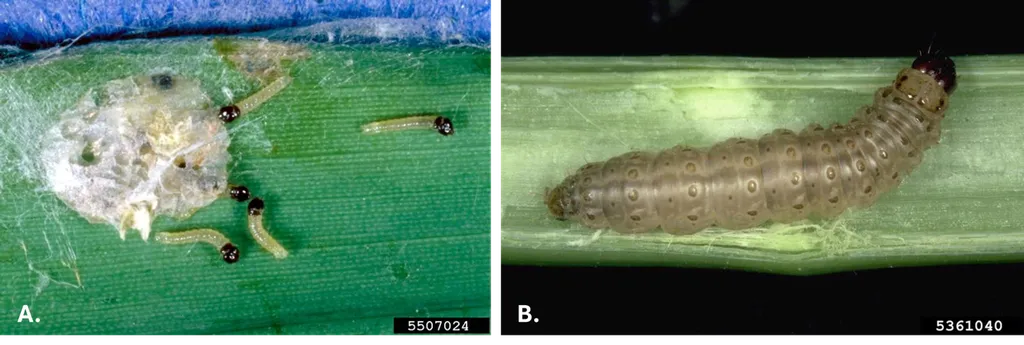In the quest for sustainable agriculture, researchers have made a significant stride in the battle against the collar borer (Elasmopalpus lignosellus), a notorious soil-dwelling pest that has long plagued soybean crops. A recent study published in *Pesquisa Agropecuária Tropical* has demonstrated the efficacy and selectivity of synthetic sex pheromones in monitoring this elusive pest, offering a promising tool for early detection and integrated pest management.
The collar borer is a formidable adversary for farmers, causing severe damage to soybean crops by burrowing into the stems and roots. Early detection is crucial for effective pest management, and synthetic pheromones have emerged as a powerful ally in this endeavor. The study, led by Robson Aparecido dos Santos, evaluated the performance of synthetic pheromone blends in monitoring Elasmopalpus lignosellus populations over two growing seasons. The results were promising, with both ternary and quaternary mixtures showing strong potential as field monitoring tools.
The ternary mixture, composed of Z9-14:Ac, Z11-16:Ac, and Z9-16:OAc, and the quaternary mixture, which includes an additional component Z11-16:OH, proved to be highly effective in attracting the target pest. Notably, these synthetic formulations performed comparably to live virgin females, which have traditionally been used as a benchmark in pheromone trapping studies.
“The synthetic pheromones not only matched the attractiveness of live females but also showed a high degree of selectivity, minimizing the attraction of non-target lepidopteran species,” said Robson Aparecido dos Santos, the lead author of the study. This selectivity is a crucial factor in integrated pest management, as it ensures that the monitoring tools do not inadvertently disrupt the ecosystem by attracting beneficial insects.
The commercial implications of this research are substantial. Synthetic pheromones offer a cost-effective and scalable solution for monitoring collar borer populations, enabling farmers to implement timely and targeted pest control measures. This can lead to reduced crop losses and decreased reliance on broad-spectrum insecticides, promoting more sustainable agricultural practices.
Moreover, the study’s findings could pave the way for further advancements in the field of synthetic pheromones. As dos Santos noted, “The success of these formulations opens up new avenues for research into other soil-dwelling pests and their management.” This could lead to the development of a broader range of pheromone-based tools, enhancing the toolkit available to farmers for integrated pest management.
The research, published in *Pesquisa Agropecuária Tropical*, represents a significant step forward in the ongoing effort to create more sustainable and efficient agricultural practices. By providing a reliable and selective method for monitoring the collar borer, synthetic pheromones offer a beacon of hope for soybean farmers and a model for future developments in the field of agritech.

